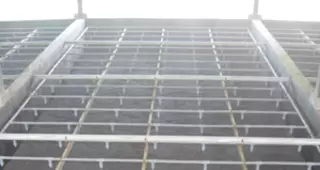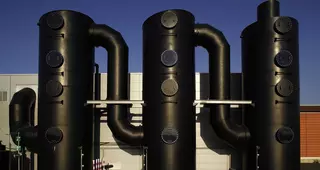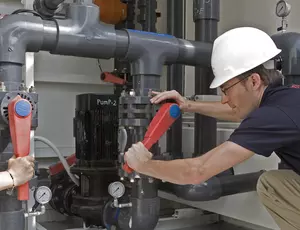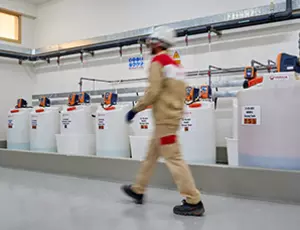Veolia Water Technologies helps industrial and municipal clients to treat and suppress odors emitted by water treatment plants.
We are all familiar with bad smells around industrial complexes. Smells similar to "rotten eggs" or "cabbage" are among the most common complaints of local residents. The main sources of bad odors linked to water treatment come from sludge storage and dehydration. They are caused by the decomposition of chemical elements that are found in the recycling of industrial effluents. To control it, specific technologies are installed to manage and eliminate odor-induced pollution.
The need for odor control is particularly acute when dealing with wastewater or industrial sites close to residential areas, where nuisance odors give rise to widespread complaints. Some examples:
- Waste disposal sites
- Water treatment sites
- Composting sites
- Industrial plants
- Agricultural sites
Whether for industrial or urban treatment plants, it’s important to rid wastewater of all its problematic odors, helping to improve the quality of life for facility employees and local residents alike.
Effective odor management can reduce odor-induced pollution in the air and in wastewater itself. In addition, odor control software can track environmental events, such as wind direction, to provide proactive odor management.
Odor management makes wastewater treatment plants more acceptable places for staff to work in and more pleasant for those who live close by.
Eliminating industrial odors is also vital for compliance.
How Veolia is committed to helping its clients to improve odor management
We are extremely attentive to technology performance in this area, as it helps improve the quality of life for all. We help industries and municipalities deal with odors emitted during wastewater treatment.
We are committed to reducing odor pollution and have invested in research and development activities for many years to tackle this issue. Our experts have developed odor-free treatment plants that suit both operating personnel and keep local residents happy.
We have been committed to water treatment for more than a century, and have acquired a solid knowledge base concerning the issues arising from odor pollution. This can come from stagnant effluents, contained in basins or lagoons before being rejected or treated.
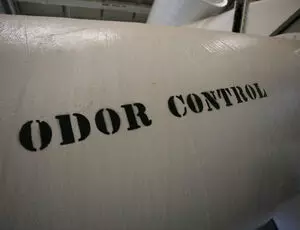
Impact of odor management
It was not until the 2000s that site operators causing odor pollution began to really consider the disruption they were causing in the absence of adequate effluent treatment.
While the commercialization of anti-odor processes for the industry has been slow to emerge, prefectural decrees now define the tolerated levels of odors emitted by industry. Maximum levels can also be set during requests for tenders.
The nuisance caused by bad odors has not always been given the attention it deserves. We now know that it varies according to several factors, such as:
- Frequency.
- Duration of exposure to bad odors.
- Weather conditions.
- Time of year.
- Geographical environment.
- Individual reactions to the smells themselves.
Although water purification, pumping and sludge treatment plants play a role in protecting the environment, they can also become a nuisance if not treated properly. The nuisances may be:
- Visual.
- Noise-related.
- Odor-related, particularly in urban areas.
We have preventative solutions that can help minimize nuisance:
- Pond covers to minimize nuisance for local residents.
- Expertise in biochemistry and sustainable development for a comprehensive solution to the problem.
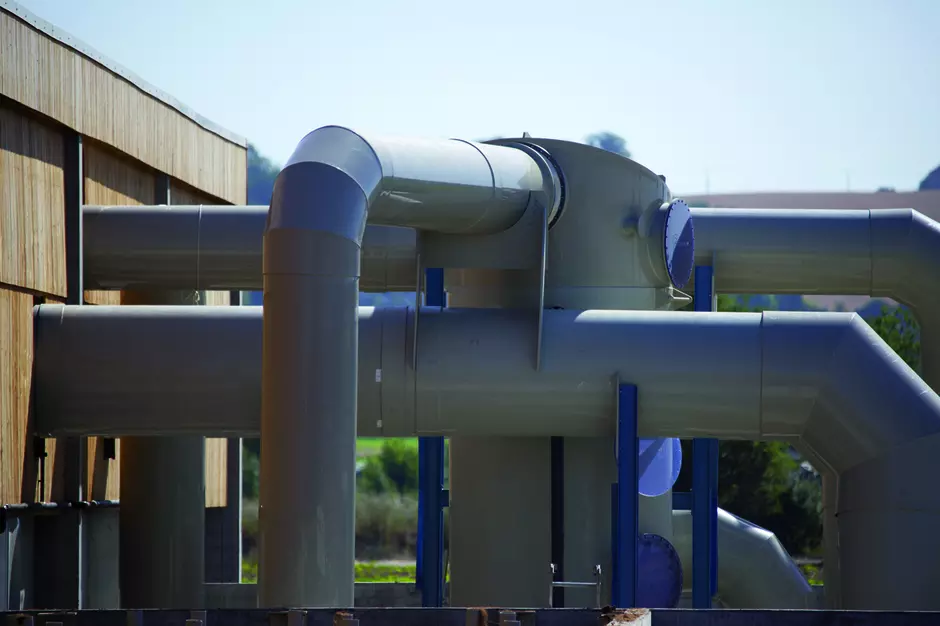
Supporting municipalities improving wastewater odor control
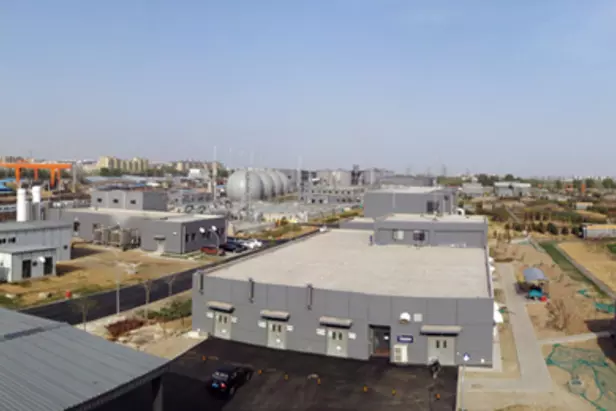
To reduce the odor nuisance of the Carré de Réunion wastewater treatment plant and to better preserve the living environment of local residents of a classified historic area, near the Versailles castle, our teams installed two types of deodorization systems. The first one (Aquilair™) to treat the air in the buildings, destroying malodorous molecules and the second one (Alizair™) to biologically treat the air coming from the membrane cells.
Discover our technologies for odor control
The deodorization used by Veolia Water Technologies is based on several technologies developed either in-house or by our partners.
Technologies - Odor control
Would you like more information about our technologies for odor control?
"Zero Nuisance" municipal wastewater treatment plants are nowadays commonplace for all utilities: no noise, limited visual impact, no odors.
Veolia masters a wide range of technologies, from gas-liquid absorption through biosorption technologies using organic or mineral supports, to adsorption technologies on activated carbon and/or zoolite.
Our technical and engineering services, our ventilation specialists, our design offices and our commissioning services allow us to assist our customers throughout the process in order to install the integrated solution adapted to each case, for their utmost satisfaction.

Yves PONTHIEUX
Project manager
Veolia Water Technologies
Contact Yves through his LinkedIn account
More services for odor control
FAQ about odor control
How are odors measured? Is it possible to eliminate them completely?
Odors can be characterized by measuring odor units by volume (OU/m3). These measurements are carried out according to local standards (for example, in France: NF EN 13725). With good purification performances (guaranteed to be achieved for each pollutant) the odor concentration can vary from 250 OU/m3 for an activated carbon to 1500 OU/m3 for a biological deodorizer.
A high odor concentration does not mean that it smells bad! Biological filters have their own odor, without being unpleasant.
Is chemical deodorization always effective?
Aquilair™ chemical deodorization towers (acid or oxidizing) are generally very effective on conventional pollutants (H2S, NH3, mercaptans and amines).
However, the reaction time is too short to treat volatile organic compounds (VOCs) which are typically generated during thermal conditioning of sludge, for example.
To treat these VOCs, the use of carbon or impregnated materials is necessary. Heterotrophic deodorization is also an economical way to treat several VOCs.
Is it possible to request a "zero odor" guarantee on my site or at the site boundary?
Unfortunately, the guarantee cannot be expressed in this way.
As mentioned in odor measurement standards (for example, by the French regulation EN FR 13725), even a good treatment will have a residual odor at the end of the treatment. This measurement can only be considered as reliable from 100 to 200 OU/m3.
For property limits, a value of 5 OU/m3 is usually required. However, such a concentration cannot be measured directly by sampling. The measurement is carried out at the point of emission (deodorization outlet) and a dispersion model is then carried out.
Technical resources
Find related content below. If you can’t find exactly what you are looking for, please contact us for further assistance.
References
Cergy-Pontoise, France (Aquilair™)
Ventilation system with 3 rows of 3 washing towers each (1 acid, 1 basic oxidizing and 1 basic oxidizing tower)
Total capacity : 180,000 m3/h (of which 2 rows of 60,000 m3/h each).
Commissioning : July 2012
Le Grand Prado, La Réunion (Aquilair™)
Design and construction of the sewage and sludge treatment plant, meeting European standards for urban wastewater treatment and the requirements for bacteriological quality of bathing water. This plant is based on a "zero nuisance" concept and is a reference in terms of sustainable development on the island.
Capacity: 170,000 PE / 32 200 m3/d
Commissioning: 2014
Ginestous, France (Aquilair™)
The largest wastewater treatment plant in Toulouse, is located in an urban area close to homes and roads. To respect the neighborhood (residents, visitors and users of adjacent traffic lanes), the plant controls odor emissions by producing stabilized sludge and guarantees irreproachable security and quality visual integration.
Air treatment is carried out by AquilairTM. The stale air is purified by physical-chemical means in washing towers.
The process is composed of :
The sludge treatment is made by thickening and centrifugation. The sludge is then sent to the anaerobic digestion unit and then to the dryer or the incinerator.
Capacity: 950 000 EH
Commissioning: 2019
Alizair™ - Rousset, France (Alizair™)
Wastewater plant - autotrophic biological deodorization by AlizairTM (capacity: 6,000 m3/h)
Plant capacity: 1,800 m3/d - 12,000 PE
Completion: 2007
Castelginest, France (Aquilair™ and Alizair™)
The wastewater treatment plant located in Castelginest includes an activated sludge water treatment system, waste recovery by composting and air treatment. The plant has been designed and built to avoid any nuisance to local residents.
- Alizair™ treats biologically 60,000 m3/h of stale air from the pretreatment and composting processes - green materials (layer of bark, peat and coconut fibers)
- AquilairTM treats 15 000 m3/h of stale air from the fermentation bins on scrubbing towers .
Capacity: 60,000 PE
Commissioning: 2012



